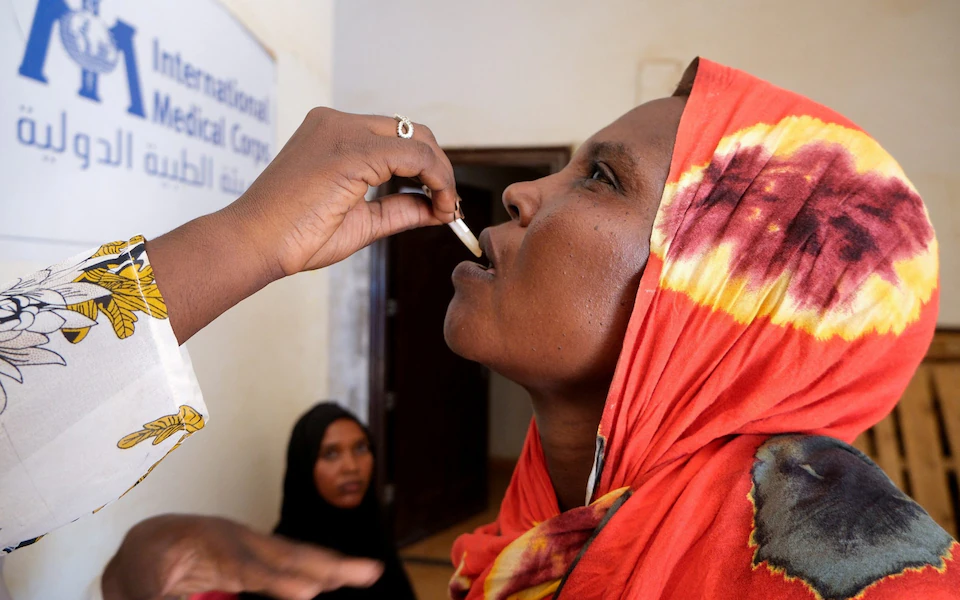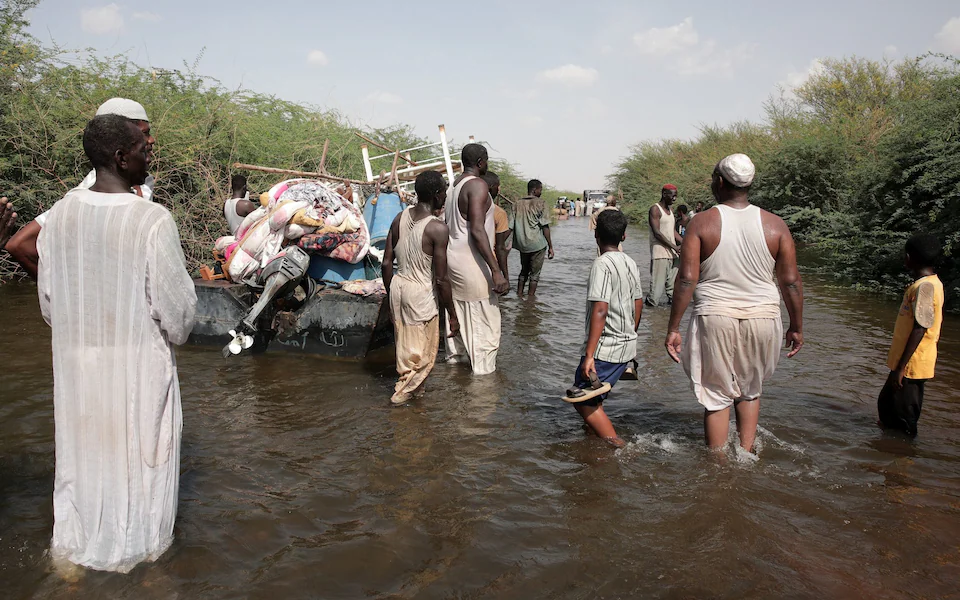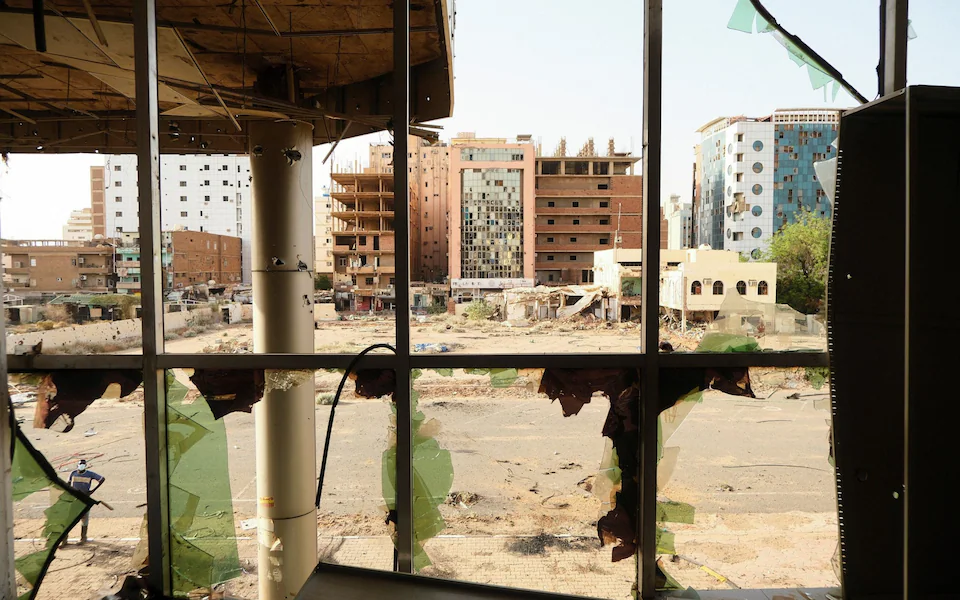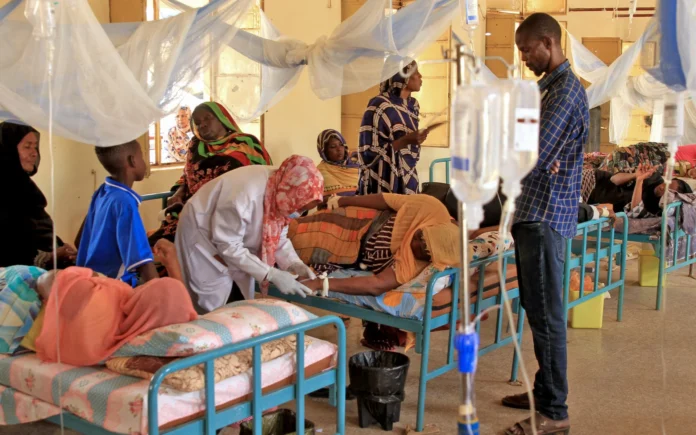Dengue and malaria in particular have surged after flooding and the breakdown of sewage systems created breeding grounds for mosquitoes
Surging cases of cholera, dengue and malaria are overwhelming hospitals in war-torn Sudan, aid workers say.
Health infrastructure has been devastated by more than two years of civil war and millions of people are living without access to adequate sanitation, providing the ideal conditions for diseases spread by mosquitoes and contaminated water.
Cases of dengue and malaria in particular have surged after flooding and the breakdown of sewage systems created breeding grounds for the insects.
Already this year there have been 24,800 cases of dengue, a painful infection known as ‘breakbone’ fever, with more than 80 per cent of them being reported in the capital, Khartoum. It is the worst dengue outbreak in Sudan’s history.
Cholera, which causes regular outbreaks in Sudan but is normally contained in months, has been spreading continuously since the conflict began in 2023, spiralling into the worst outbreak in years with nearly 120,500 cases.
The World Health Organization (WHO) has warned of a “concerning case fatality rate” of almost three per cent – nearly three times the emergency threshold.
While malaria is endemic in Sudan, the country has seen an unusually high number of cases this year, a WHO spokesperson told The Telegraph.
As of October 3, 1.7 million malaria cases and 117 deaths were reported across Sudan, the WHO said. Actual cases and deaths are estimated to be higher.
 A Sudanese woman receives a dose of a cholera vaccine at Omdurman Hospital, as Sudan grapples with outbreaks of dengue and cholera amid the annual rainy season and a collapsed healthcare and infrastructure system, in Khartoum Credit: REUTERS
A Sudanese woman receives a dose of a cholera vaccine at Omdurman Hospital, as Sudan grapples with outbreaks of dengue and cholera amid the annual rainy season and a collapsed healthcare and infrastructure system, in Khartoum Credit: REUTERSCases of measles and diphtheria are also rising due to disruptions to vaccination campaigns caused by the conflict, says the WHO.
The surge in diseases is placing extreme strain on what is left of Sudan’s health system.
“It is impossible to respond to all the needs,” said Dr Shible Sahbani, the WHO’s representative and Head of Mission in Sudan.
“When we say that we were able to address one issue in general, it’s at the expense of other priorities.”
Tackling the mosquito-borne diseases is proving particularly challenging, in part because health workers on the ground are not in a position to fix damaged infrastructure.
“We cannot control mosquito-borne diseases without addressing the broader water and sanitation infrastructure,” Dr Sahbani said. “This is beyond the health sector.”
Health facilities are overwhelmed. In one Khartoum teaching hospital last month, 100 patients were crammed into a space built for 20, he added.
Of the 80 hospitals in Khartoum state, only 34 are now functioning, according to the Sudan Doctors Network. Many are similarly overcrowded.
Liesbeth Aelbrecht, Doctors Without Borders’s Emergency Coordinator for Sudan who visited Khartoum last month, said: “It was unbelievable. I’d never seen anything like that. The hospitals were overflowing, they were really overstretched.
“I’m sure we are not seeing the peak yet of the outbreak,” she told The Telegraph.

The full extent of the damage to Sudan’s health system, particularly hospitals in Khartoum, is still emerging.
Several aid workers in the capital told The Telegraph that the Rapid Support Forces (RSF) – the paramilitary group fighting the army – looted and sabotaged the hospitals before they were driven out of the city, stealing equipment including MRI machines and ripping copper cables out of the walls.
The Sudanese Doctors Network estimates it will cost $14 billion (£10.5 billion) to reconstruct the country’s healthcare system.
But the conflict has not only destroyed hospitals – it has also hit Sudan’s health workforce. Many doctors and nurses have fled the country or been killed.
“The city has been left in tatters,” Dr Sahbani said of Khartoum. “Many people left, they found jobs in other countries and for sure they will not come back…to rebuild this, it will take years and years.”
Medical education systems have also suffered, meaning even the process of training new staff will be hindered, he added.
Some 2.2 million displaced people have returned to Khartoum since the Sudanese army retook the city in January, with another two million projected to return by the end of the year.
As well as contending with three disease outbreaks, those returning to Khartoum also face the threat of unexploded ordnance. Civilians were killed and injured last month when an ambulance hit a mine, said Dr Sahbani.

The relief effort is being hindered by major funding shortfalls.
The UN’s $4.2 billion humanitarian response plan for Sudan only reached 25 per cent of its funding target for 2025, forcing aid agencies to divert resources away from essential services like maternal care and non-communicable diseases to manage outbreaks, Dr Sahbani said.
Nevertheless, health workers are optimistic that they can improve the situation.
“The needs are huge…but this reality can be changed if we have enough resources to help these people on the ground,” said Dr Sahbani.
There have been recent signs of progress.
Cholera cases have recently begun to decline in Khartoum thanks to a major campaign led by the WHO, Unicef and local authorities that focused on boosting surveillance and improving access to clean water.
And while major international charities and UN agencies are struggling to operate in much of the country, a grassroots volunteer network known as Sudan’s Emergency Response Rooms (ERR’s) has been able to partly plug the gap, emerging as a bookies’ favourite for last week’s Nobel Peace Prize in the process.
Now comprising over 20,000 volunteers and operating more than 600 local hubs across all of Sudan’s 18 states, the ERRs run communal kitchens, mobile first aid units, shelters for displaced families, and education programmes for children, often in areas completely cut off from traditional aid.


